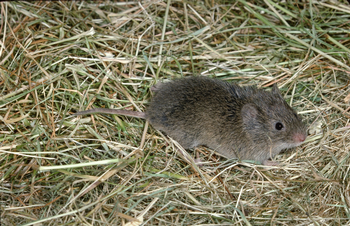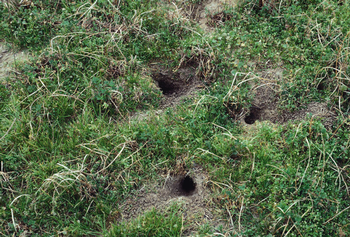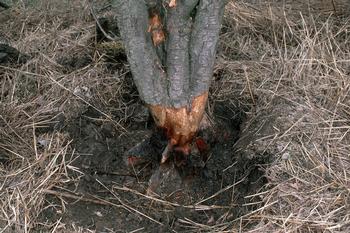Could the creature digging in your garden be a vole?
-
Marty Nelson
-
Determining who is responsible for digging up your garden plants is not always easy. Among the usual culprits to consider are gophers, moles, rats, raccoons, and voles. Unless you happen to have a wildlife camera focused on your garden, it’s often a matter of ruling out possible suspects. Voles may not be as pervasive as other vertebrate pests, but if they decide to invade your garden, they can cause a lot of damage.
 Voles are rodents that are larger than mice and smaller than rats. Photo: UC Regents
Voles are rodents that are larger than mice and smaller than rats. Photo: UC RegentsAlthough voles are also called meadow mice, they are not mice or rats. They belong to a separate genus and are more closely related to lemmings. The most common of the five species of voles in California is the California vole, Microtus californicus. It is four to six inches in length when full grown with grayish brown fur, a blunt nose, small ears and eyes, and a short tail. California voles are herbivores and prefer areas where grasses and dense ground cover provide protection. Although their favorite foods are grasses and herbaceous plants, voles also gnaw on the bark of trees and feed around the root crown. Damage to crops, orchards, vineyards, and home gardens can be severe when vole populations are high.
Voles are active both day and night, but primarily around dawn and dusk. They hide in dense underbrush and in their shallow burrows, so they are not easy to spot. Once you notice plant damage or chew marks on tree trunks, look for burrows with numerous openings, about one to two inches in diameter, connected by narrow pathways. The pathways may be littered with droppings and plant fragments. Unlike gophers and moles, voles do not pile up soil around their burrows. Shallow burrows and adjoining pathways are evidence of a vole colony. Photo: UC Regents
Shallow burrows and adjoining pathways are evidence of a vole colony. Photo: UC RegentsVoles are extremely prolific and mature rapidly with females bearing multiple litters per year. Their populations can fluctuate widely depending on environmental conditions and the presence of predators. Voles are snack food for owls, hawks, coyotes, foxes, snakes, feral cats, and other carnivores so their lives are short, most living less than a year. In ideal circumstances, vole populations stay in balance, providing food for predators with minimal damage to gardens and crops.
The first step to controlling voles is to make your garden less welcoming. Because they only like to travel a short distance to a food source, removing the vegetation they depend on for cover will discourage voles and prompt them to go elsewhere. Create a grass and weed free zone around your garden. Clear vegetation in a three-foot perimeter around trees and use cylindrical wire mesh or plastic trunk guards to protect young trees. Be sure to bury the bottom edge of the trunk guard at least six inches below the surface to keep voles from burrowing underneath to chew the bark. Any fencing to exclude voles should also extend below ground level.
If voles persist despite loss of vegetative cover and physical barriers, then snap-type mouse traps can be used with varying success. Traps should be placed at right angles to burrow pathways with the trigger end in the pathway so that voles will trip it as they pass over. Flooding or fumigating burrows does not usually work because of the shallow and open structure of the burrows. No home remedy or repellent has been shown to be reliably effective. The bark around this pear tree has been gnawed by voles. Photo: Jack Kelly Clark, UC Regents
The bark around this pear tree has been gnawed by voles. Photo: Jack Kelly Clark, UC RegentsAlthough there are types of poison bait that can be used against voles, baiting should be considered a last resort to be used only when vole populations are high and damage is extensive. There is always some risk to pets, wildlife, and humans in the use of poison bait and it should never be applied to edible gardens during the growing season.
If you have spied voles in your garden, you may take some comfort in knowing that vole populations often decrease naturally with the assistance of predators. Your efforts to eliminate their hiding places will aid in that process.



